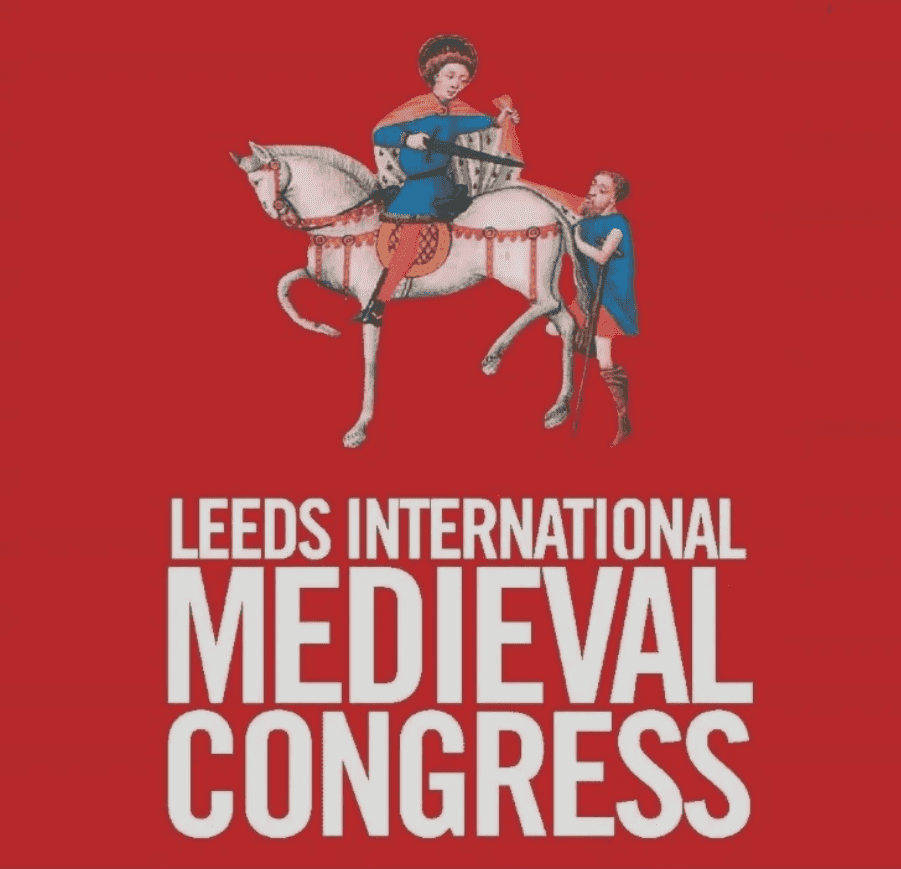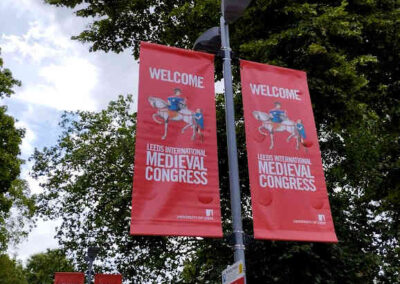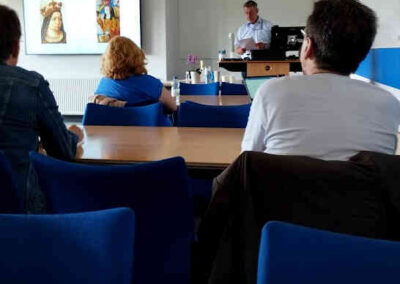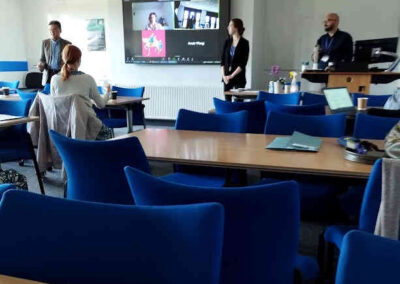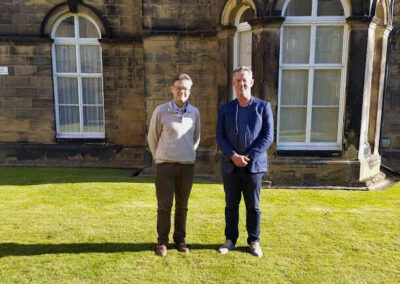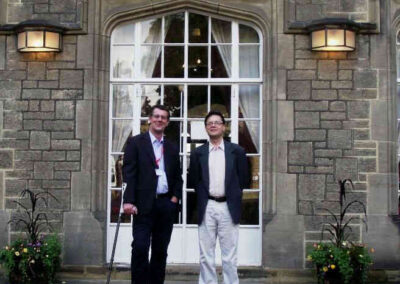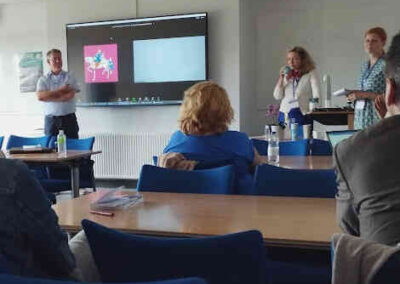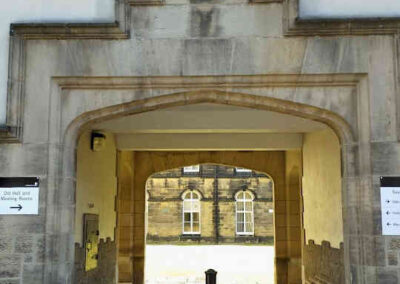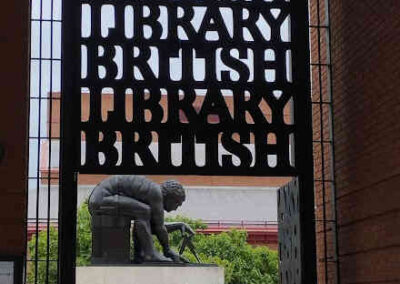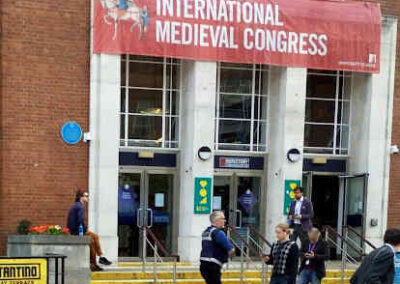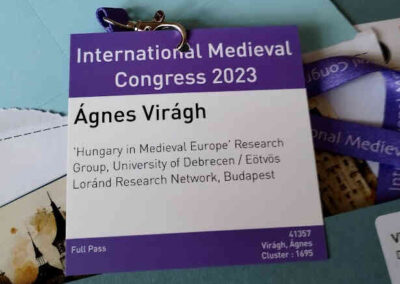Részvétel a lleidai középkorász találkozón
Leeds-hez hasonlóan a spanyolországi Lleidában is többéves múltra tekint vissza a nemzetközi középkorász konferenciák szervezése. A kutatócsoport elődjének számító Lendület-kutatócsoport (Memoria Hungariae: Magyarország a középkori Európában) tagjai a 2017-es találkozóan önálló szekciót szerveztek. Az idei, 11. találkozón (2023. jún. 26-28.) Ölbei Tamás Ph.D.-hallgató (University of Lorraine – University of Debrecen) képviselte a kutatócsoportot, aki egyúttal egy másik hadtörténeti projektben is érintett (A középkori magyar hadszervezet forrásai Európában, 1301-1437, NKFIH).
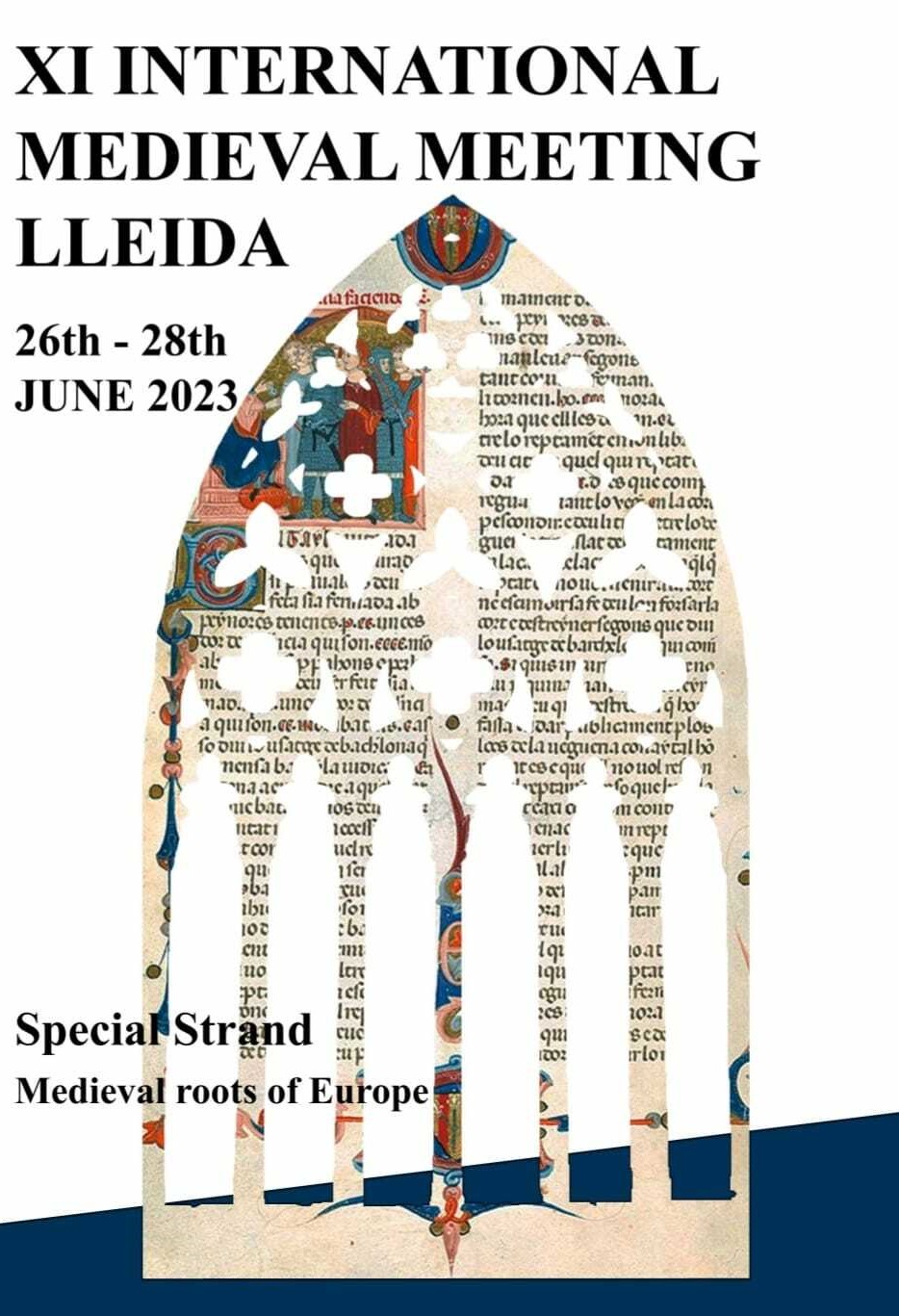
Ölbei Tamás előadása a Flocel Sabaté (Universitat de Lleida) vezette szekcióban (Borders, wars and crusades) hangzott el. Az előadás címe: Hungarian mercenaries in Trecento Italy. A 14. század során az Itáliában harcoló zsoldosok kapcsán az előadó bemutatta a kutatócsoport adatbázisának az egyik, jelenleg is épülő részét, amelyhez Visegrádi Renáta és Virágh Ágnes dolgozzák fel a Firenzei Állami Levéltárban található számadáskönyvek alapján az 1360-as években a Firenze által szerződtetett magyar zsoldosok adatait.



